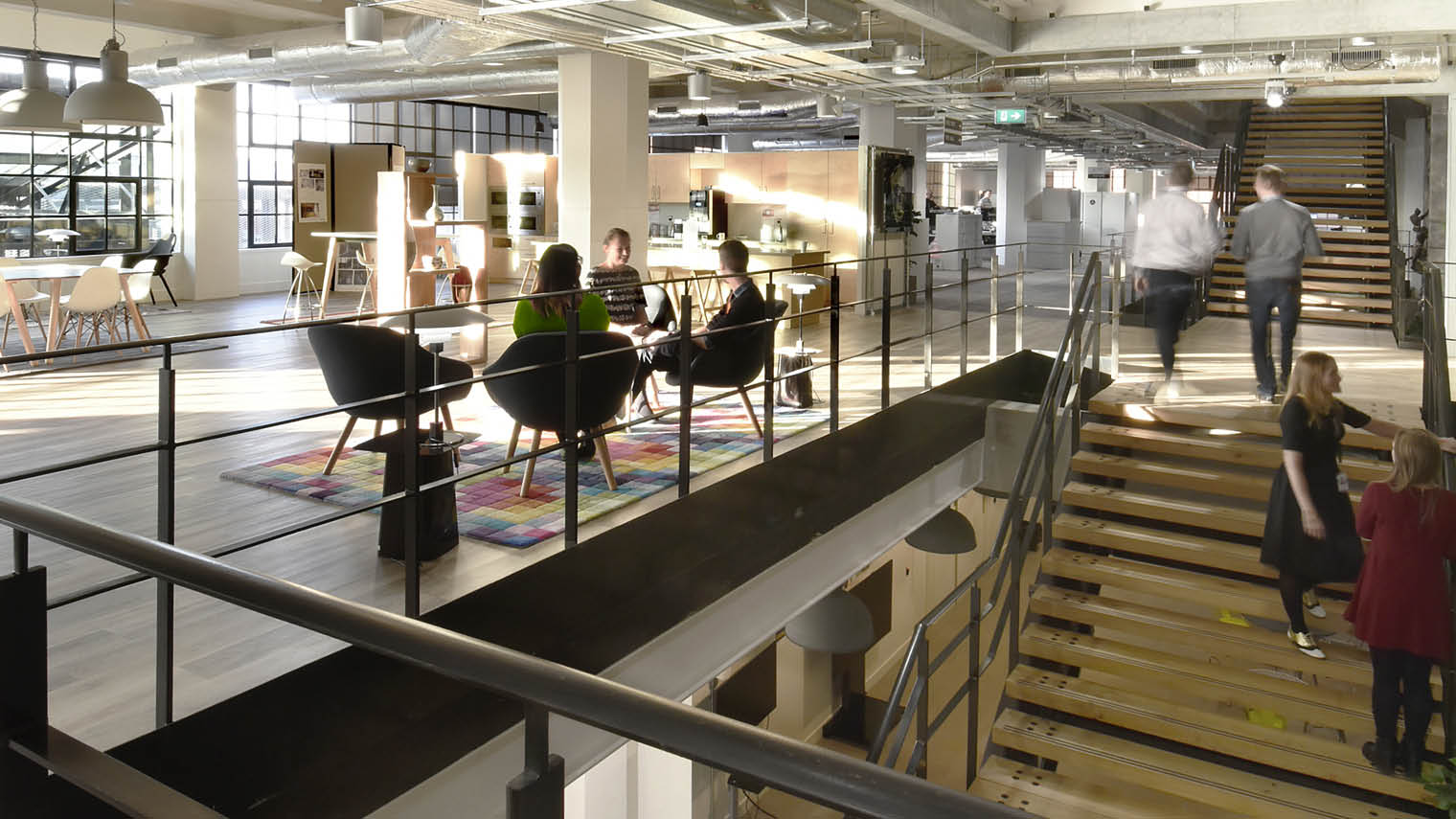There has long been a desire to achieve the most from space in the workplace. This demand is ever-heightening, with office space typically occupied for less than five of every 24 hours throughout the year and remote working further reducing usage.
For employers, this presents both challenges and opportunities. The efficiency drive has led to more desk-sharing – it is now not uncommon to have 1.5 full-time equivalent employees at a workspace – but managers are also conscious that such an intense environment can damage productivity.
“Ultimately, rather than simply counting on efficiency alone, employers are looking for heightened productivity, but this can be difficult to measure and understand,” explains Simon Bird, director at architecture firm LOM.
“There are opportunities for businesses to create working environments that are healthier, welcoming, fun, collaborative and better suited to the diverse needs of people who often work better with flexibility and spontaneity.”

As a result, as well as assessing the cost per square foot of a property, how the value might be increased or maximised should also be assessed. Managers of office spaces increasingly have a more nuanced understanding of productivity, with the change being reflected in the quality and variety of design of new offices, and in the strategic thinking that lies beneath these choices.
Architects and interior design firms such as LOM are working in partnership with businesses to discuss how spaces might be best used in the short, medium and longer term. “People are beginning to think of their workplace as being not something that’s fixed, but something that needs to evolve,” says Mr Bird. “This is a very positive step.
“From our perspective, it’s an exciting moment. Space has traditionally been considered by businesses purely as an expense, but they now see how it offers strategic and inherent value, and how this can be helpful and positive for employees.”
Technology is likely to play an important role in helping inform employers of how they use their offices and how this might be improved through design. But experimentation and direct feedback from first-hand users are vitally important in helping to improve overall productivity. LOM focuses on clients’ business drivers and carefully analyses their workplaces to establish strategies as the basis for its design work.
By working with employees and monitoring outputs when changes are made, businesses can use great space to enable productivity and wellbeing within their workforce
Giving people choice is very important. Mr Bird notes: “Different people prefer different types of space to carry out tasks in a variety of ways and at different times. A key aim for employers is creating spaces that individuals genuinely like and that work for them. A happier workforce is a more productive workforce.”
These shifting approaches and the continuing decline in the average length of time that individual professionals spend at a desk, is leading to the creation of more varied and personalised spaces. These areas encourage more chance encounters between colleagues and between people who work for different companies, but may share the same co-working space.
RocketSpace, a San Francisco-based tech startup incubator, worked with LOM to develop its first campus outside the United States in Angel, north London. It is a co-working facility for multiple companies who share a large central space designed for collaboration, both organised and accidental, at a wide range of scales. Loyalty firm dunnhumby has also worked with LOM to transform its space, with the inclusion of a central stairwell and open spaces to encourage more frequent and spontaneous engagement between staff.

Flexibility of space is inevitably a key part of the equation for a growing variety of businesses. Efficiency no longer has to look like it has been forced on a space. When companies understand the importance of quality space in helping productivity, they can make what would have seemed counter-intuitive decisions, but which are now outstanding choices as companies can improve staff output and efficiency through providing them with excellent, spacious workplaces.
Employers must carefully consider staff feedback throughout the design journey. Mr Bird says: “The aim should not be to enforce change on a workforce without their consultation and their buy-in. By working with employees and monitoring outputs when changes are made, businesses can use great space to enable productivity and wellbeing within their workforce.”
In a time of great change for the office, even if work spaces shrink overall, places for people to meet and interact remain vital. Outstanding design and use of space provide game-changing productivity improvements, and allow businesses to excel against their competitors.
To achieve great quality of space to maximise your office productivity please visit www.lom-architecture.com


